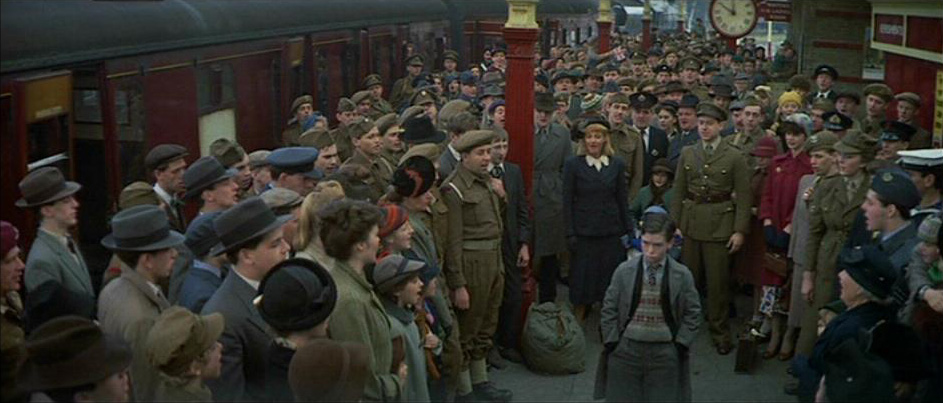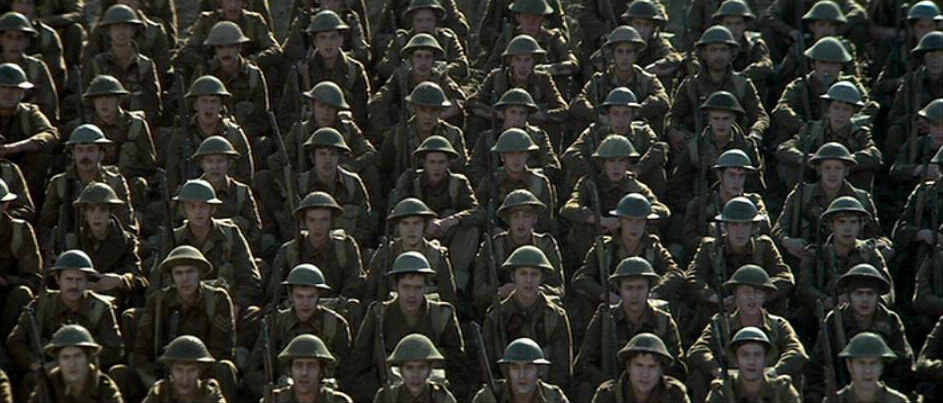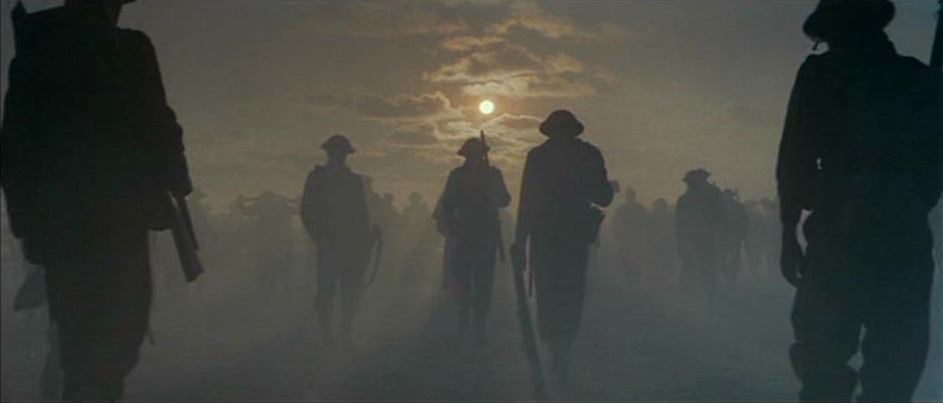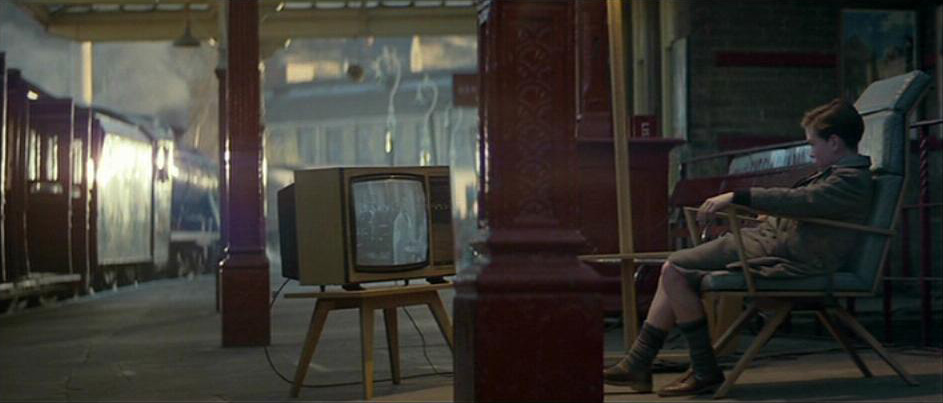Bring The Boys Back Home
[Roger Waters and choir]Bring the boys back home.
Bring the boys back home.
Don't leave the children on their own, no, no.
Bring the boys back home.
Song In A Sentence:
The personal and social devastation caused by conflict – like the death of Pink’s father – is alluded to in the entreaty to bring all soldiers home from war.
W hen summarizing the album song-by-song with Tommy Vance in 1979, Roger Waters described “Bring the Boys Back Home” as “the central song on the whole album.” Such a claim from the chief writer of the Wall might seem odd at first, considering that the song doesn’t appear to deal directly with Pink’s story arc, or even feature Pink at all. Many assume that the war-themed “Boys” follows in the same line as songs like “Goodbye Blue Sky” or the middle bridge of “Hey You,” sung from the perspective of a seemingly omniscient narrator rather than the personal point of view of our lead protagonist. For them, the song is Roger Waters’ anti-war statement applicable to the here-and-now as much as it is to the World War II era in which so many of the Wall’s war-inspired pieces are based. By this reading, Pink is set up as an example of the continuing ill-effects of war, the personal aftermath living in the shadow long after the last bombs have been dropped and the body count tallied. Assuming that the majority of the action takes place in the late 1970’s, the consequences of this particular war are still very much relevent thirty years after it officially ended, perpetually haunting the dreams of a character and his creator. The message is clear: war, social divisions, societal walls, all have unimagined lasting effects that far outlive the disputes over which they were waged in the first place. The message is very much a restatement (or a reversal, depending on which Old Testament verses one cites) of the Biblical adage about the sins of the father being visited upon his children; according to Waters, the sins (or rather, actions) of one generation most certainly ripple into succeeding generations. So what better statement to convey this than a rather universal call to “bring the boys back home” so as to not “leave the children on their own.”
And yet there’s more to the song than a simple war protest, as Waters goes on to state in the same aforementioned interview. “[‘Bring the Boys Back Home’] is partly about not letting people go off and be killed in wars, but it’s also partly about not allowing rock and roll, or making cars or selling soap or getting involved in biological research or anything that anybody might do, not letting that become such an important and ‘jolly boys’ game’ that it becomes more important than friends, wives, children, other people.” In other words, the song is Pink’s realization as to the dangers of defining one’s self by the detritus of life – those very things warned about in “What Shall We Do Now?” – rather than the truly meaningful connections of family, community and humanity. Pink’s journey thus far in the album’s second half has been a metaphorical one of returning “home,” with the current song focusing him on that very task. No longer just the soldiers fighting in any war, the lyrics’ “boys” also becomes a reference to Pink and a personal call to abandon the war within himself and return back to his roots.
The analysis of “Vera” – especially that concerning the movie sequence – mentioned Pink’s dichotomous feelings about the futility of hope and the optimism inherent in the communal longing as embodied by the war-era singer; we glimpsed a Pink reaching beyond himself to acknowledge the dreams of those who watched their own loved ones go to war. What was only insinuated in the lyrics of the previous song, with Pink asking if “anyone else in here feel[s] the way I do?” steps to the forefront in “Bring the Boys Back Home.” While the choir certainly dominates the song, a close listening reveals Pink (in the voice of Waters) singing right along with them, ostensibly cognizant of the message of metaphorical homecoming. Even as the choir fades with the last line, Pink still shouts the word “home” with unabashed passion in his voice…a passion that soon gives way to the bricks of his wall as represented by the voices of his teacher, the groupie, and the operator telling him another man has answered his home telephone. Despite his apparent realization that his self-imposed seclusion was a mistake, his wall is now too high for him to break through so easily. The voices of his past swirl through the speakers in a constant loop, though mixed in is a new one, a knock at the door followed by a man (presumably his tour manager) telling him “Time to go.” Spurred by this new voice trying to get past this literal door isolating him in his room, Pink asks for a final time if there is “anybody out there?”, unaware of just where that “out there” will soon lead him.
The sudden appearance of the drummers marching out of the fog in the cinematic depiction of “Bring The Boys Back Home” is a perfect introduction to the highly stylized sequence in which narrative continuity is discarded in order to emphasize the song’s underlying message of resolution. Every person at the train station turns towards young Pink and sings in unison while Pink, occupying his own little island amongst the crowd, turns from face to singing face without uttering a single word (a bit unlike his vocal self singing right along with them on the album). Whereas before he was alienated from the crowd because his father had not returned home with the other soldiers, now he is physically separated, and only further isolated by not joining in with the rest of the chorus. One could infer from the stunning visual that even though he knows the answer to his wall, even though part of him is singing it in chorus, he is either oblivious to the resolution that stares him straight in the face, or uncertain of just what to do with it.
As the band marches back into the fog, the scene shifts to show a group of soldiers lounging against the dirt walls of a trench. Unlike those in Pink’s barren mental landscape, the soldiers depicted in this sequence are alive, healthy, and seemingly untouched by the devastation of war. And unlike the earlier shot of soldiers advancing into the fog in “the Thin Ice,” the troops in “Bring the Boys Back Home” march into a fog that is clearing under the prominent blaze of the noonday sun. Recalling that light is often associated with truth in literature, the soldiers progress out of the metaphorical death of the all-consuming mist and into the warmth of the collective voice, the truth of common humanity that shatters walls and connects all life. In a scene reminiscent of the chanting school children in “Another Brick In the Wall Part 2,” row upon row of singing soldiers fills the screen hinting at both the conformity as well as the common bonds of human existence. Such a scene also recalls Pink’s earlier, if not entirely heart-felt, line that “together we stand, divided we fall,” once again reminding the viewer of the answer to Pink’s predicament.
But in spite of this repeated resolution, the song ends abruptly as Pink walks alone along the train platform towards the familiar TV, lamp, and chair. After settling into the chair to watch TV, the scene cuts to his adult self sitting catatonic in the same position in his disheveled hotel room. Auditory thoughts from his past blend with the pounding at the door. As if in answer to the question of anybody being “out there,” Pink’s manager and crew break into his room. Yes, there are people “out there,” though those who find him might not be able to provide the salvation Pink is looking for. If anything, they fortify the mental prison that Pink has constructed.






